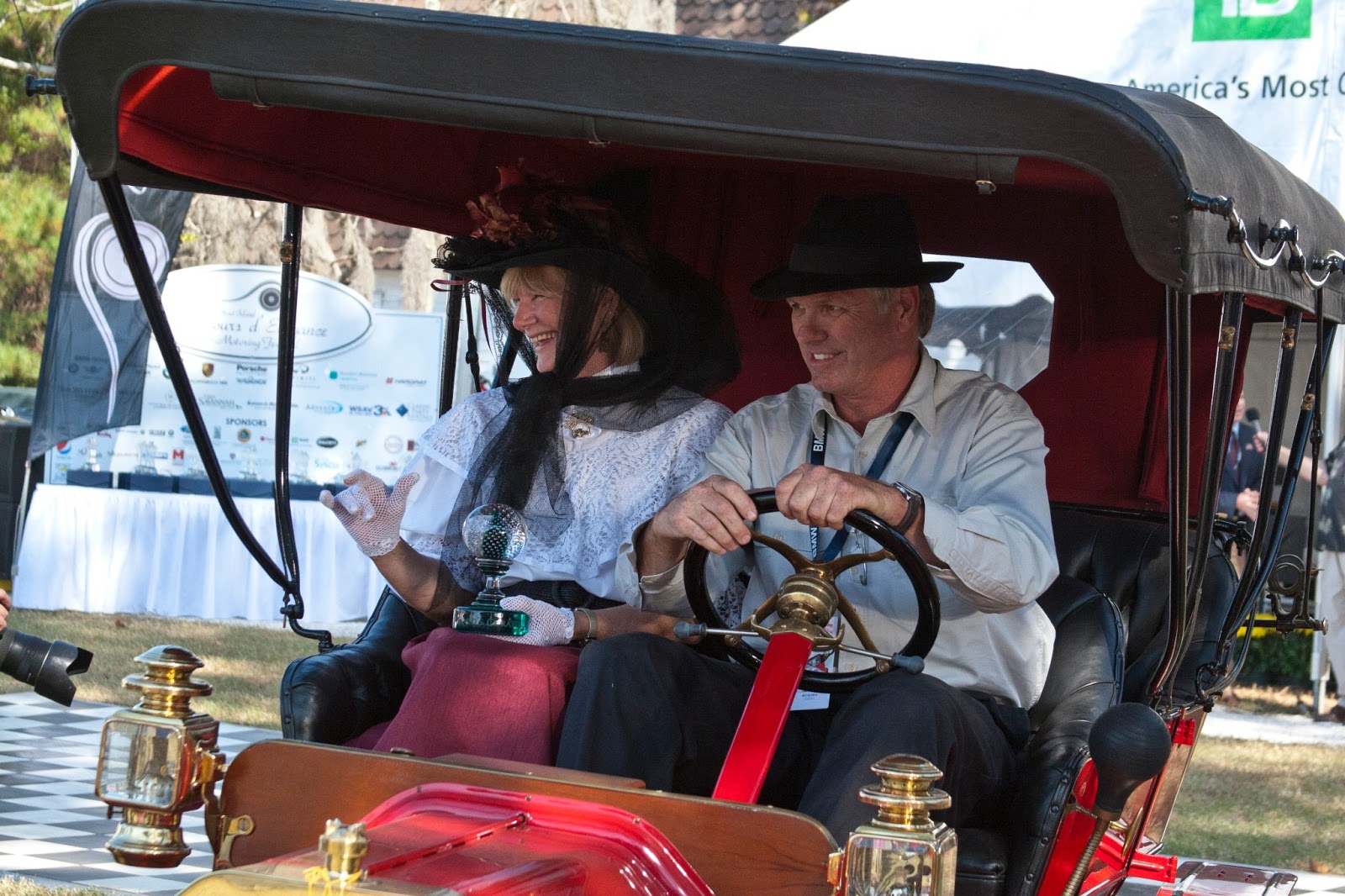As you've hopefully seen in the first segment of my Concours coverage, this event, on the picturesque grounds of the Coastal Discovery Museum on Hilton Head Island, has been host to some of the most meticulously-restored vintage cars I've ever beheld. In this second installment, you join me in midday, about to cross the field into the second half of the show area.
This area contained two groups of show cars: early twentieth century cars, like the ones you see in the picture above, and post-1950s European sports cars. I focused more attention on the latter group, and boy were there some good ones.
We have to start with this, my absolute favorite car of the entire event. This grille adornment is found on none other than a 1972 Alfa Romeo Nuova Super 1300.
It's a long name for an essentially mainstream Alfa Romeo sedan. Well, mainstream in 60s and 70s Italy, anyways. The Nuova Super 1300 is based on the Giulia Super, which, in turn, is a Giulia with modifications taken from the TI Super, which was a racing version. This means racing-tuned carburetors, a redesigned instrument cluster and steering wheel, four-wheel disc brakes with servos, and a rear anti-roll bar. With these special modifications, the Giulia Super quickly became the best-selling of the Alfa Romeo Giulia sedans. As the years rolled on, even more variants of this hugely popular small sedan were produced, but come 1972, Alfa Romeo decided it was time for a refresh. This is where this particular show car comes into play. The Nuova Super 1300 didn't bring too many innovations to the table, other than a name change, but nevertheless, this kept these sedans rolling out until 1978.
In keeping with the trend of cars you've probably never seen or heard of before, I also include this Monteverdi High Speed, one of the only vehicles ever manufactured in Switzerland. This is a strange car, not just because of its rarity, but also because of its genetic makeup. The High Speed's heart is a 440 cubic inch unit from Chrysler, which was mated to, well, a spinal cord I suppose, which was either a Chrysler 3-speed automatic or 5-speed manual. Skin and muscle tissue were designed by the Italian house Frua, then assembled by their fellow countrymen at Fissore. This rather unlikely mixture of influences came together to create a grand tourer in coupe, convertible, and sedan trim levels. The High Speed, only having been in production from 1967 to 1970, is a very rare car indeed and undoubtedly deserves its place in the spotlight.
Another one of my favorite parts about this show was the fact that you see many owners and their significant others dressed in period-appropriate clothing. This of course made for some lovely photo opportunities.
However, continuing on through the post-1950s section, I found many more iconic cars. Probably the most iconic was the Cadillac, harking back to one of the most utopian periods of American history, which is displayed through it's sheer size, plush interior, and ornate aircraft-inspired bodywork. Another American that's definitely worth mentioning is the Oldsmobile Toronado. This car is significant not only for it's scrolling gauges, but also for the fact that it was front wheel drive. Before the car's launch in 1966, the only other American production vehicle to employ front wheel drive was the Cord L-29, which had gone on sale in 1929, but did not last through the Great Depression. What makes the Olds so special though, was the fact that it actually worked. Having had seven years of research and development, this two-ton V8-powered coupe could reach 60 in 7.5 seconds, and despite it's front-end weight bias, was a competent handler. All of this earned it the coveted Car of the Year title from Motor Trend magazine and, more importantly, a spot in automotive history.
Even with all of these iconic cars in attendance, the day started to wind down, and my memory card started to reach the point of no more space. I was able to catch a few rounds of the automotive equivalent of "crowning" though, which was held on a winner's circle-inspired piece of checkerboard flooring. Probably the most notable award winner was a 1931 Alfa Romeo 6C Gran Sport, which truly deserved the utmost of titles. Another car that rolled across was the 1927 Aston Martin, which was chosen as "the best car for cruising the low-country." Can't say I disagree with that one either. Lastly, the kindergartner's favorite, the Messerschmidt Bubble Car took home the prize for its category.
Now that all is said and done, I can safely say that this was one of the best car events I've ever been to. I suppose that's a given though. Everything about a concourse competition harks back to those parades in 17th century Paris: the lush scenery, the fantastic carriages (now with engines, or course), and the lavish clothing. Combined, all of these create an atmosphere that cannot be paralleled and, although tickets can be a tad on the expensive side, it's one of those things you just have to experience if you're interested in cars.

























































